How to Fix the P203F Code on Dodge Cummins (Pro Insights)
Diagnostic Trouble Code (DTC) P203F is a generic code that applies to vehicles manufactured after 1996. The code applies to Dodge Cummins and other vehicles, including Ford, Audi, RAM, GMC, and many more.
The code P203F On Dodge Cummins stands for “Reductant Level Too Low.” In simple terms, DEF in a diesel engine is required for burning exhaust, which in turn reduces the overall emissions of a vehicle. The reductant level sensor associated with the DEF tank measures the DEF level and transfers this data to the ECM. ECM stores the code when it finds a reductant level is less than the expected level.
Below, you will get general guidelines on how to fix the code while the symptoms, causes, and severity will also be taken care of. Keep reading!

What Does P203F Mean for Dodge Cummins?
To reiterate, in a diesel engine, DEF (Diesel exhaust fluid) is required in the burning exhaust, which in turn reduces the overall emissions of a vehicle. There is a reductant level sensor, which is associated with the DEF tank. It measures the DEF level and transfers this data to the ECM.
ECM stores the code when it finds a reductant level is less than expected. Usually, the code appears when the reductant level gets too low.
As soon as the code appears, it is a good idea to take the necessary steps to fix the issue. Here is a breakdown of the code P20b9 to make your understanding better.
- P = denotes the vehicle’s powertrain.
- 2 = indicates a generic number derived from the SAE standard.
- 0 = refers to the specific component of the issue
- 70 = indicates Too low a reductant level
How Serious Is The Code P203F On Dodge Cummins?
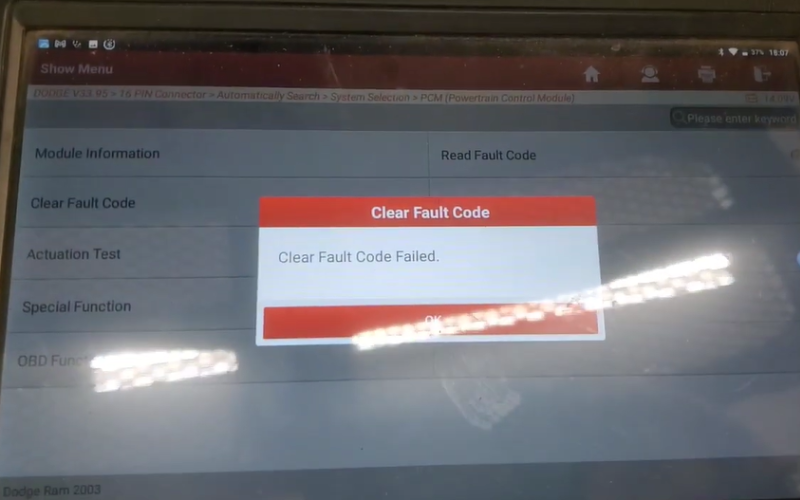
The code is considered minor. The standard DEF (Diesel exhaust fluid) level is essential to ensure emissions produced by the particular vehicle. It should not be less than the permitted limit. If so, then more emissions will be released into the atmosphere.
If you live in an area where the emission standard is very strict, you may face the consequences for driving a vehicle with this issue. There can be additional consequences too. The Dodge Cummins with this issue may also cause additional damage to the engine.
What causes Code P203F on Dodge Cummins?
A defective reductant level sensor is one of the major reasons for the code. There could be some other additional causes. Below is a list of them. Addressing and resolving these causes will almost certainly result in the code being removed.
- Low fluid Level
- Inappropriate fluid in the DEF tank
- Faulty sensor
- Electrical damage near the sensor
- If there is an issue in the SCR or PCM controller (least likely)
- Loose connection
Other Symptoms of Getting P203F on a Dodge Cummins?
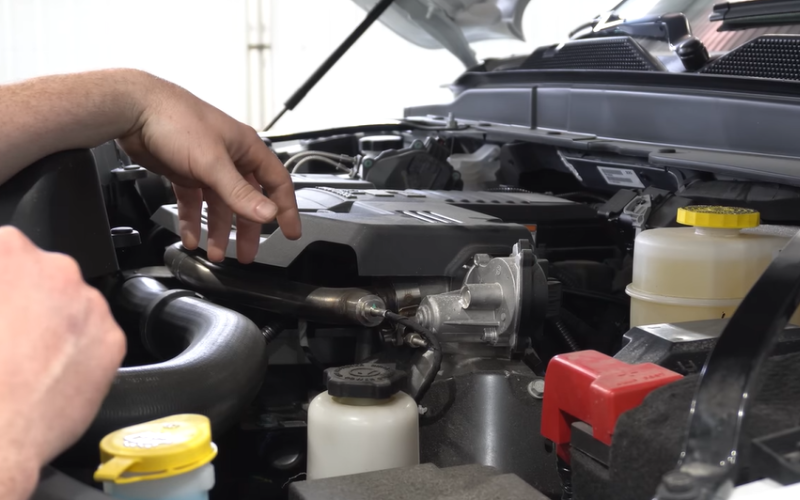
The most obvious symptom can be an incorrect DEF level reading. The other symptoms of the code include the following:
- The check engine light will appear
- Poor engine performance
- You might see the white smoke
- The code will appear
- More emissions will produce
- You will get the warning sign in the instrument cluster
How To Fix P203F Code On Dodge Cummins?
Since it remains unclear what is causing the problem, even if the reasons are so obvious, it is wise to fix the issue by getting professional help.
Note:
Suppose you try to fix the code on your own. You’ll need a Dodge Cummins vehicle-specific repair manual corresponding to the make, year, and engine size. You will get all the necessary information, including step-by-step instructions, a wiring diagram, and other explanations.
Basic Tools Required
- The OBD Scanner
- A digital Volt or ohmmeter
- Dipstick
- Flashlight
Step 1: Clear all the active Codes
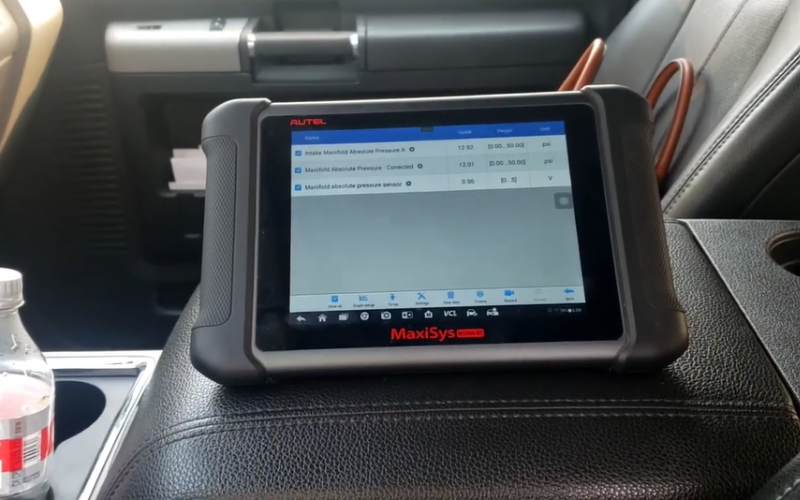
You need an OBD scanner to find all the active codes. After collecting all the data, clear them all. Now start the vehicle and drive for a while. Rescan and check what code remains. Now, go ahead and solve the code.
Step 2: Inspect the wiring Harness.
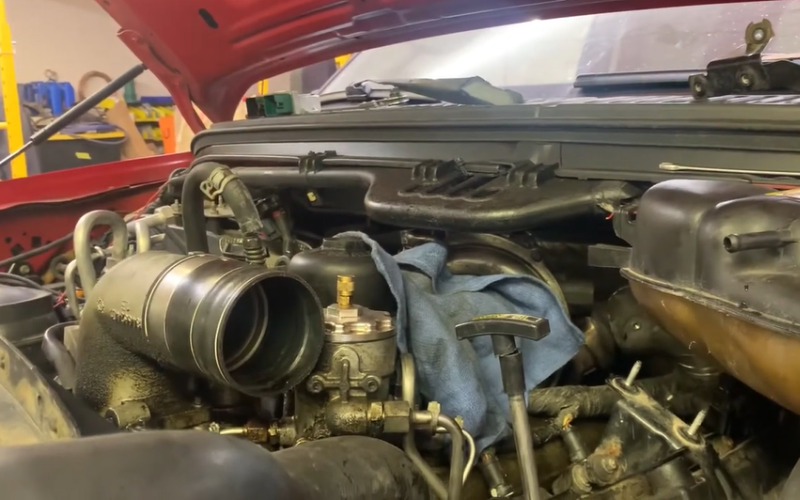
You may take this step after completing all other necessary steps. However, checking and locating the damaged wires and repairing or replacing them may solve the issue earlier. If there is no wire and tear, move on to the next step.
Step 3: Fill the DEF Tank
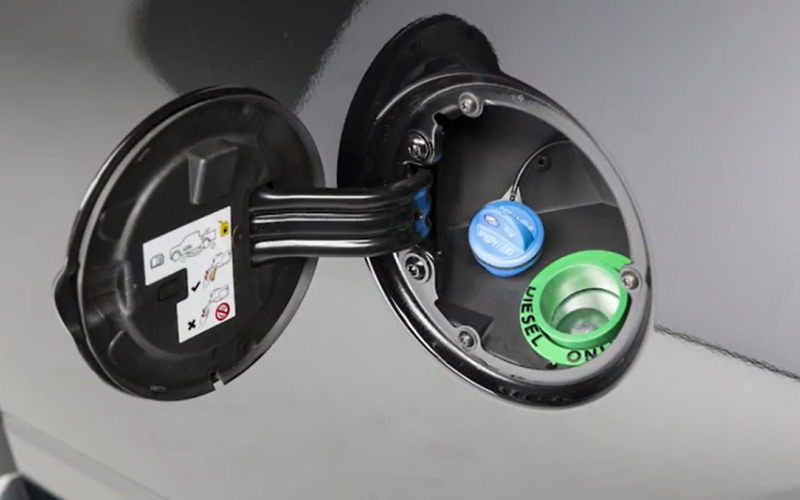
At this stage, locate your DEF tank. Usually, it is located under the vehicle or in the trunk. Anyway, check your service manual. You need a dipstick to check the fluid level.
Since the code appeared, the fluid level has already dropped. If you do not have access to Dipstick, try using a flashlight and check the DEF level or see if there is any DEF there. Before filling the tank, make sure the quality of DEF.
Step 4: Carry out the Resistance Test
To run the test, you need a digital volt or ohmmeter. Now the question is when and why you must take the test. Usually, the test is carried out to check if a steady power supply is available on the system.
The test result will tell you if the sensor is faulty. Check the manual for the voltage limit and verify it with the result. You might have to replace the sensor if the range is greater than the specified range.
Step 5: Necessary Replacements If needed
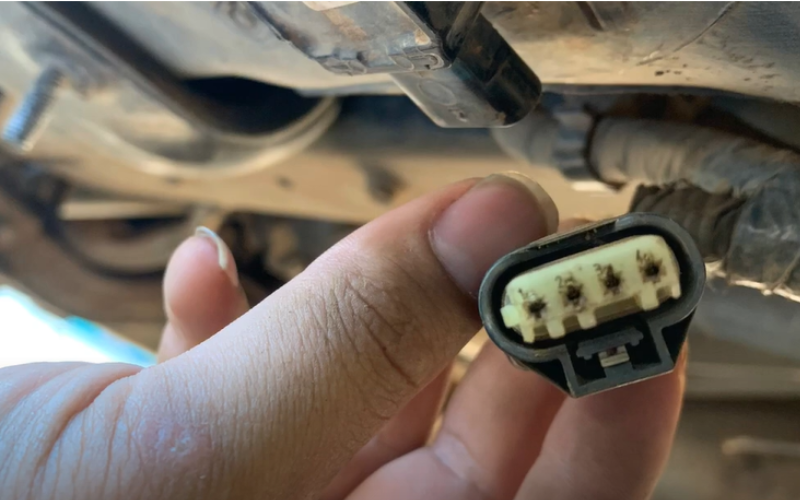
You might have to replace the necessary components to fix the code. Here is a list of them.
- You may need to replace or repair the DEF
- DEF sensor
- Fuel Filler neck
- Change ECM ( least likely)
All the above steps are for informational purposes only. As stated earlier, fixing steps changes corresponding to the make, year, and engine size. Always consult with the repair service bulletin of Dodge Cummins.
How Much Does It Cost To Fix P203F On A Dodge Cummins?
When it comes to fixing the code, many things determine the cost of repairing the code P203F.
If you follow the DIY approach to solving the issue, you will need skill and the necessary tools, such as a scanner, an ohmmeter, or Dipstick. The cost of a scanner and an ohmmeter ranges from $200 to $300.
If you decide to hire a professional, you may expect to pay somewhere between $150 and $200. You may also pay for specific replacement parts, such as the DEF sensor.
Can You Drive a Dodge Cummins With Code P203F?
As stated earlier, code P203F is moderately severe or minor. You can continue driving after the code appears. However, fixing the code as it appears is the logical decision.
Conclusion
Though the DTC P203F will not do severe damage, taking too much time to solve the issue is not a good idea. Delay in solving the issue comes with two consequences.
First, you are releasing more emissions into the atmosphere, which is unacceptable. Second, you are violating local emission control standards, which is also not acceptable.
So, you must solve the problem. Either follow the DIY approach, which is usually not recommended. On the other hand, get a good mechanic with experience in this field.
Related Posts:





